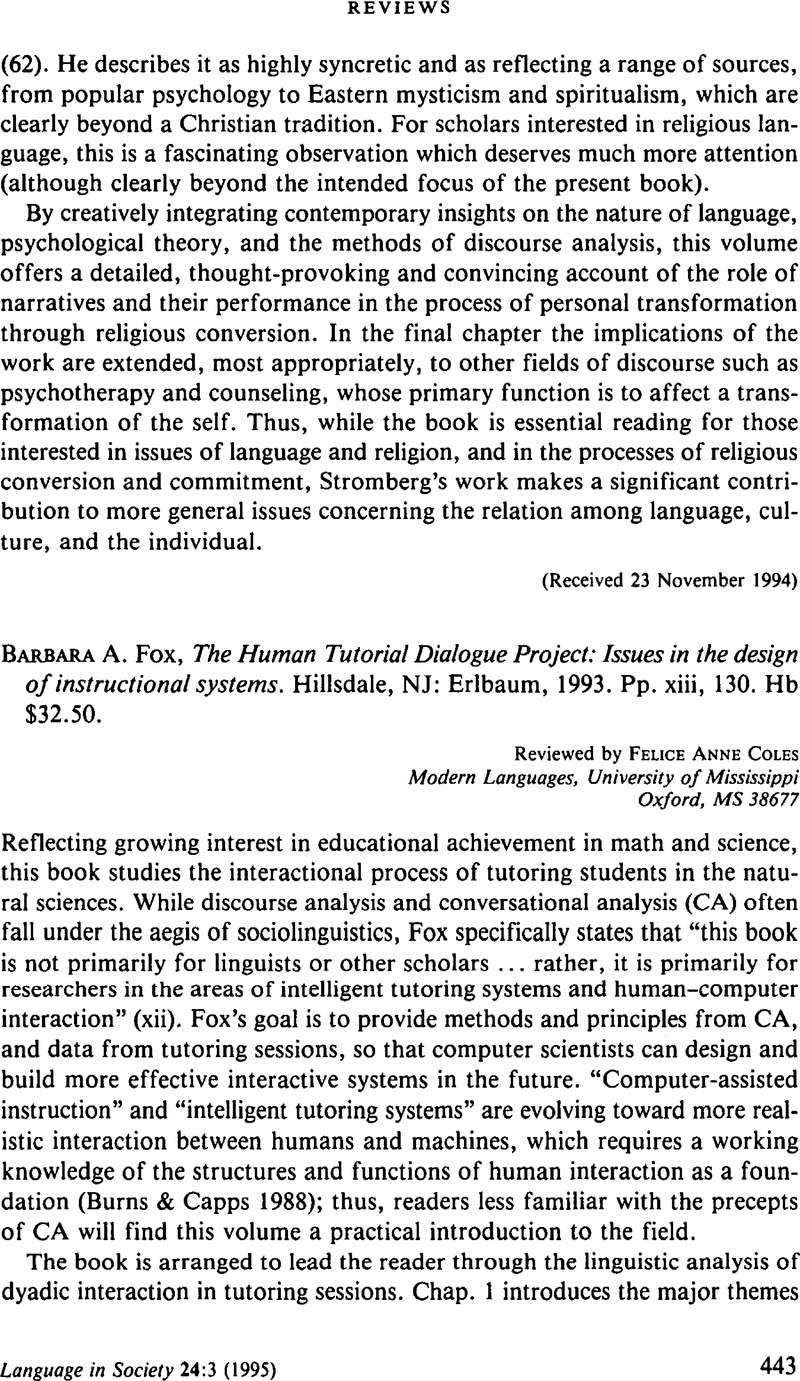No CrossRef data available.
Article contents
Barbara A. Fox, The Human Tutorial Dialogue Project: Issues in the design of instructional systems. Hillsdale, NJ: Erlbaum, 1993. Pp. xiii, 130. Hb $32.50.
Published online by Cambridge University Press: 19 February 2009
Abstract
An abstract is not available for this content so a preview has been provided. Please use the Get access link above for information on how to access this content.

- Type
- Reviews
- Information
- Copyright
- Copyright © Cambridge University Press 1995
References
REFERENCES
Burns, Hugh L.. & Capps, Charles G. (1988). Foundations of intelligent tutoring systems: An introduction. In Polson, Martha C. & Richardson, J. Jeffrey (eds.), Foundations of intelligent tutoring systems, 1–20, Hillsdale, NJ: Erlbaum.Google Scholar
Clancey, William J. (1989). Situated cognition and intelligent tutoring systems. In Maurer, H. (ed.), Lecture Notes in Computer Science: Computer Assisted Learning. 2nd International Conference, ICCAL ’89 Dallas, TX, USA, May 9–11, 1989, Proceedings, 31–37. Berlin: Springer.Google Scholar
Cocking, Rodney R., & Mestre, José P. (1988). Linguistic and cultural influences on learning mathematics. Hillsdale, NJ: Erlbaum.Google Scholar
Gumperz, John J. (1982). Discourse strategies. Cambridge & New York: Cambridge University Press.CrossRefGoogle Scholar
Levinson, Stephen C. (1983). Pragmatics. Cambridge & New York: Cambridge University Press.CrossRefGoogle Scholar
Sacks, Harvey; Schegloff, Emanuel & Jefferson, Gail (1974). A simplest systematics for the organization of turn-taking. Language 50: 696–735.CrossRefGoogle Scholar
Schegloff, Emanuel A. (1982). Discourse as an interactional achievement: Some uses of “uh huh” and other things that come between sentences. In Tannen, Deborah (ed.), Analyzing discourse: Text and talk (GURT 1981), 71–93. Washington, DC: Georgetown University Press.Google Scholar
Skemp, Richard (1987). The psychology of learning mathematics. Hillsdale, NJ: Erlbaum.Google Scholar


